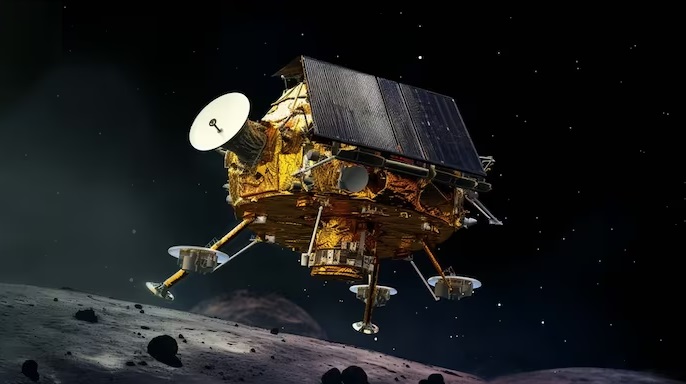In a historic and monumental achievement, India’s space agency, ISRO (Indian Space Research Organisation), has once again proven its prowess on the global stage with the resounding success of Chandrayaan 3. This remarkable mission, aimed at achieving a successful lunar landing, marks a pivotal moment in India’s space exploration journey. In this comprehensive article, we delve into the intricacies of Chandrayaan 3, its significance, and the technological brilliance that led to its triumphant landing on the lunar surface.
A Prelude to Success
Chandrayaan 3 was conceptualized as the logical successor to the Chandrayaan 2 mission, which, while successful in many aspects, faced challenges during its attempted soft landing on the Moon. Building upon the lessons learned from Chandrayaan 2, ISRO engineers and scientists meticulously designed Chandrayaan 3 to overcome obstacles and ensure a seamless lunar landing.
Technological Marvel: The Chandrayaan 3 Mission
The Chandrayaan 3 mission showcased India’s technological ingenuity and determination. Aiming for a high-precision soft landing on the Moon’s surface, the mission comprised a lander and a rover. The lander, equipped with state-of-the-art landing technologies, utilized advanced sensors, thrusters, and autonomous systems to guide its descent. The rover, equipped with cutting-edge scientific instruments, was designed to explore the lunar terrain, conduct experiments, and gather crucial data.
The Landing Triumph
On the day of the much-anticipated landing attempt, ISRO’s Mission Control Centre buzzed with a mixture of excitement and tension. As Chandrayaan 3’s lander initiated its descent, the world held its breath. In a flawless display of precision engineering, the lander executed a textbook-perfect landing, gently touching down on the lunar surface. The moment was met with jubilation and applause as India celebrated yet another historic milestone in its space exploration endeavors.
Scientific Objectives and Discoveries
Chandrayaan 3’s scientific objectives were as ambitious as its technological feats. The rover, equipped with advanced instruments, was tasked with conducting a thorough analysis of the Moon’s surface, composition, and geology. Its findings promised to unravel mysteries about the Moon’s history, potential resources, and the solar system’s formation. The data collected by the rover held the potential to reshape our understanding of celestial bodies and their evolution.
Global Impact and Collaborative Spirit
The success of Chandrayaan 3 extends beyond national pride; it exemplifies the spirit of international collaboration in space exploration. ISRO’s achievements have inspired not only Indian citizens but also space agencies and enthusiasts worldwide. The sharing of knowledge, technology, and expertise has paved the way for a more interconnected and informed approach to exploring the cosmos.
Inspiring Future Generations
Chandrayaan 3’s triumphant landing serves as a beacon of inspiration for future generations. The mission’s success underscores the significance of perseverance, innovation, and dedication in achieving audacious goals. Young minds across the nation are now ignited with dreams of contributing to space exploration, technology, and scientific discovery.
Conclusion
In conclusion, Chandrayaan 3’s successful lunar landing stands as a testament to India’s indomitable spirit and technological prowess. ISRO’s dedication, precision engineering, and commitment to exploration have once again propelled India to the forefront of space research. The mission’s achievements reverberate not only within the scientific community but also among citizens who take pride in their nation’s accomplishments.
As we celebrate this monumental achievement, we are reminded of humanity’s innate curiosity and our relentless pursuit of knowledge. Chandrayaan 3’s success reinforces the idea that the cosmos is not beyond our reach and that, with determination and ingenuity, we can continue to unlock the mysteries of the universe.



